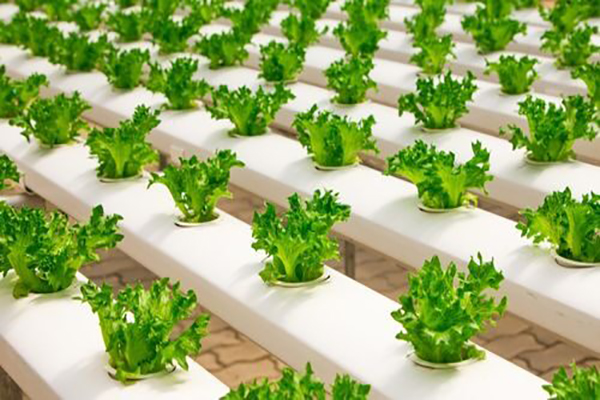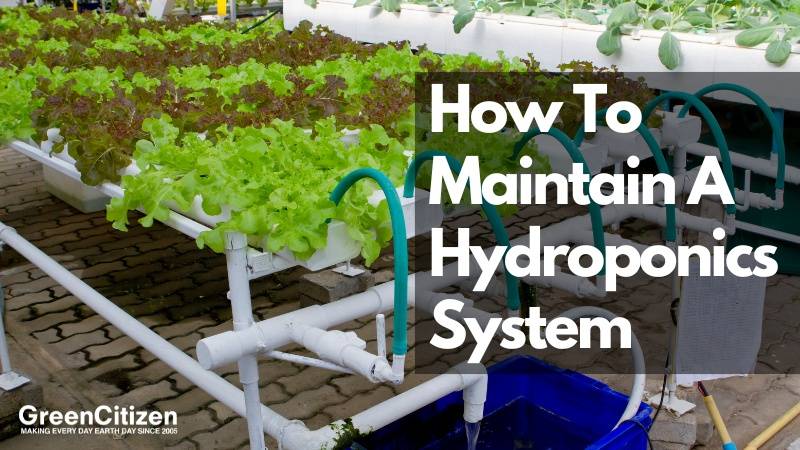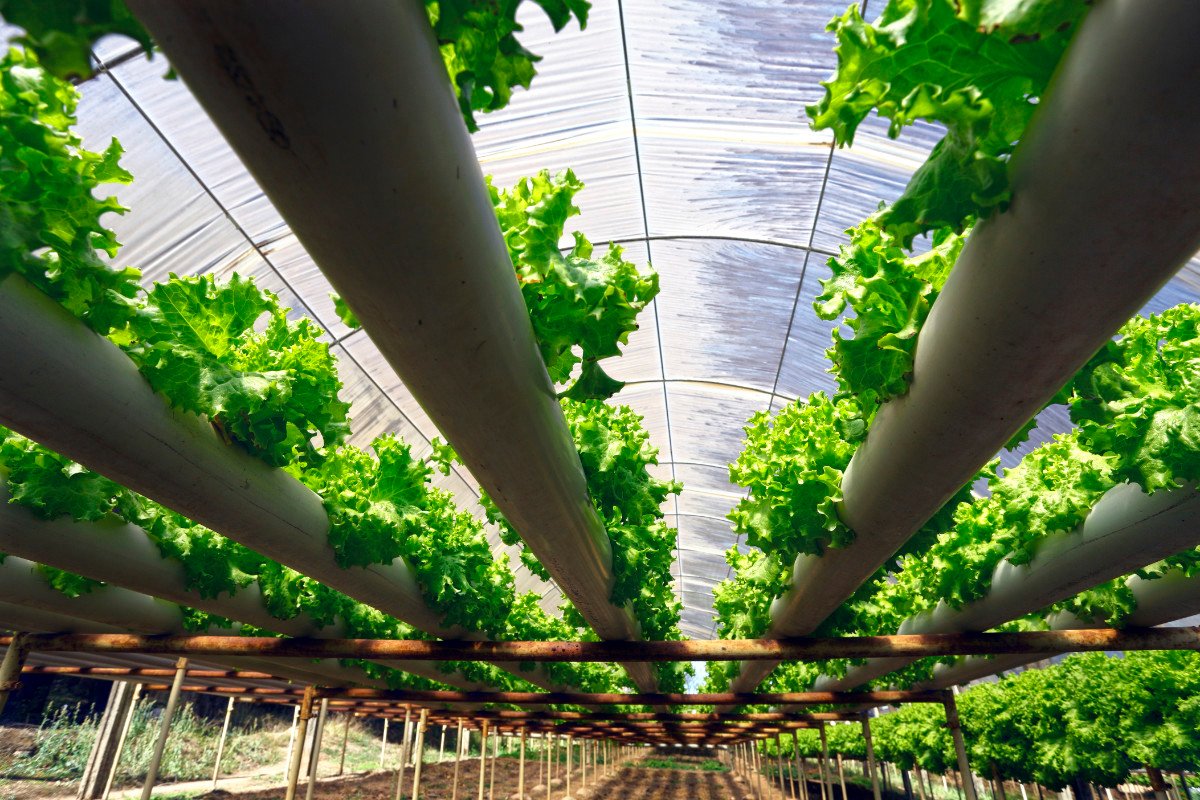Maintaining hydroponic systems is essential for healthy plant growth. It involves regular care and monitoring.
Hydroponics offers a soil-free way to grow plants, making it an attractive option for many gardeners. But to keep your hydroponic system running smoothly, you need to follow some key practices. Regular maintenance ensures that your plants get the nutrients they need.
It also helps prevent problems like algae buildup and nutrient imbalances. In this blog post, we’ll explore practical tips for maintaining your hydroponic system. You’ll learn how to keep your setup clean, monitor nutrient levels, and ensure your plants thrive. Whether you’re a beginner or an experienced gardener, these tips will help you maintain a healthy hydroponic system.

Credit: growdepot757.com
Choosing The Right System
Maintaining a hydroponic system starts with choosing the right one. The system you pick will affect your plants’ health and growth. It is essential to understand different types and factors before deciding.
Types Of Hydroponic Systems
There are several types of hydroponic systems. Each has its unique features and benefits.
- Deep Water Culture (DWC): Plants grow in a nutrient-rich solution. An air pump supplies oxygen.
- Nutrient Film Technique (NFT): Nutrient solution flows over the roots in a thin film.
- Ebb and Flow: The system floods and drains at set intervals.
- Aeroponics: Roots hang in the air and are misted with nutrients.
- Wick System: Nutrients are drawn up to the roots through a wick.
- Drip System: Nutrient solution drips onto the roots at scheduled times.
Factors To Consider
When choosing the right hydroponic system, consider these factors:
- Space: How much room do you have?
- Budget: How much can you spend?
- Plant Types: What plants do you want to grow?
- Maintenance: How much time can you dedicate?
Assessing these factors will help you make an informed choice. The right system will ensure your plants thrive.
Setting Up Your Hydroponic System
Setting up a hydroponic system can be exciting. You can grow plants without soil. This method uses a nutrient-rich water solution. It is efficient and can be done indoors or outdoors. Before starting, ensure you have the right components and follow the necessary steps.
Essential Components
First, gather the essential components. You will need a water reservoir. This holds the nutrient solution. Also, get a water pump. It circulates the solution. An air pump and air stones are necessary. These add oxygen to the water. You will also need growing trays or containers. These hold the plants. Do not forget to get grow lights if you are growing indoors. These mimic sunlight. Lastly, you will need nutrient solutions. These provide the plants with the necessary minerals.
Initial Setup Steps
Start by choosing a location. Ensure it has adequate light and ventilation. Place the water reservoir in the chosen spot. Fill it with the nutrient solution. Connect the water pump to the reservoir. Ensure it circulates the solution well. Attach the air pump and air stones to the reservoir. This will keep the water oxygenated.
Next, set up the growing trays. Place them above the reservoir. Ensure the water pump can deliver the solution to the trays. If you are using grow lights, position them above the trays. Make sure they can cover all the plants.
Lastly, place the plants in the growing trays. Ensure their roots can reach the nutrient solution. Monitor the system regularly. Check the water levels and nutrient concentration. Keep an eye on the plants’ growth.
Nutrient Solutions
Maintaining a hydroponic system requires careful attention to nutrient solutions. These solutions provide essential minerals and nutrients to your plants. Without proper management, plants can suffer from deficiencies or toxicities. This section will guide you through choosing and mixing nutrient solutions, and how to monitor them effectively.
Choosing Nutrient Solutions
Selecting the right nutrient solution is crucial. There are several types available:
- General-purpose solutions: Suitable for most plants.
- Specialized solutions: Tailored for specific plants or growth stages.
Always consider your plant’s specific needs. Read labels carefully. Opt for trusted brands. A good nutrient solution should contain a balanced mix of macronutrients and micronutrients. Macronutrients include nitrogen (N), phosphorus (P), and potassium (K). Micronutrients include iron (Fe), manganese (Mn), and zinc (Zn).
Mixing And Monitoring
Proper mixing is key to maintaining a healthy hydroponic system. Follow these steps:
- Measure the required amount of nutrient solution.
- Mix it with water in the correct ratio. Refer to the product instructions.
- Use clean, filtered water to avoid contamination.
After mixing, monitor the solution regularly. Use a pH meter to check the pH level. The ideal pH range for most plants is between 5.5 and 6.5. Additionally, use an EC meter to measure the electrical conductivity. This indicates the nutrient concentration. Adjust the solution as needed to maintain optimal levels.
Keep records of your readings. This helps in tracking changes and making necessary adjustments. Regular monitoring ensures that your plants receive the right nutrients. This promotes healthy growth and maximizes yield.
Water Quality
Maintaining the quality of water is crucial for any hydroponic system. Clean, balanced water ensures healthy plant growth. This section will cover key aspects of water quality in hydroponics, including the importance of pH levels and maintaining water purity.
Importance Of Ph Levels
The pH level of water is vital for nutrient absorption in plants. Most hydroponic plants thrive in a pH range of 5.5 to 6.5. When the pH level is off, plants can suffer from nutrient deficiencies.
- Check pH levels daily.
- Use a digital pH meter for accuracy.
- Adjust pH levels using pH up or pH down solutions.
Balanced pH levels ensure plants can absorb nutrients effectively. This keeps your plants healthy and productive.
Maintaining Water Purity
Pure water is free from contaminants and harmful chemicals. Contaminated water can lead to plant diseases and poor growth.
- Use filtered or distilled water.
- Avoid using tap water with high chlorine levels.
- Replace water in the system regularly.
Regularly changing water prevents the buildup of harmful substances. Clean water promotes healthy root systems and optimal plant growth.
| Parameter | Ideal Range |
|---|---|
| pH Level | 5.5 – 6.5 |
| Water Temperature | 18°C – 24°C |
| EC (Electrical Conductivity) | 1.2 – 2.0 mS/cm |
Maintaining these parameters ensures a balanced and healthy hydroponic system. Pay attention to water quality for the best plant growth.
Light Requirements
Proper lighting is essential for the success of your hydroponic system. Plants need light for photosynthesis. This process converts light into energy. Without sufficient light, plants will not grow well. Choosing the right light and schedule is crucial. Let’s explore the different types of grow lights and their schedules.
Types Of Grow Lights
There are several types of grow lights available. Each type has its advantages and disadvantages. Here are some of the most popular options:
- Fluorescent Lights: These are affordable and energy-efficient. They are ideal for small setups and seedlings.
- LED Lights: LEDs are durable and have a long lifespan. They offer a full spectrum of light and are energy-efficient.
- High-Intensity Discharge (HID) Lights: These include Metal Halide (MH) and High-Pressure Sodium (HPS) lights. They provide intense light and are suitable for larger setups.
Here is a table summarizing the key features of each type:
| Type of Light | Cost | Energy Efficiency | Best For |
|---|---|---|---|
| Fluorescent Lights | Low | High | Seedlings, Small setups |
| LED Lights | Medium to High | Very High | All growth stages, Energy savings |
| HID Lights (MH & HPS) | Medium | Moderate | Larger setups, Intense light |
Light Schedules
Light schedules vary depending on the plant’s growth stage. Here are some general guidelines:
- Seedling Stage: 16-18 hours of light per day.
- Vegetative Stage: 18-24 hours of light per day.
- Flowering Stage: 12 hours of light and 12 hours of darkness per day.
Consistency is key in light schedules. Ensure lights turn on and off at the same time each day. Using a timer can help maintain this schedule. Proper light schedules will promote healthy growth and maximize yield.

Credit: greencitizen.com
Pest And Disease Management
Maintaining a hydroponic system involves various tasks. One critical aspect is pest and disease management. Without proper care, pests and diseases can ruin your plants. Here is how you can keep your hydroponic garden healthy and thriving.
Common Pests
Several pests can affect hydroponic systems. Aphids are tiny insects that suck plant juices. Spider mites create webbing and damage leaves. Fungus gnats lay eggs in the growing medium. Whiteflies leave a sticky residue on plants. Identifying these pests early is crucial.
Preventive Measures
Keep your hydroponic system clean. Remove dead leaves and debris regularly. Use pest-resistant plant varieties. Ensure proper air circulation to prevent mold and mildew. Inspect plants daily for signs of pests. Use natural predators like ladybugs to control aphids. Neem oil can also deter many pests.
System Cleaning And Maintenance
Maintaining a hydroponic system involves regular cleaning and upkeep. This ensures plants grow healthily and the system runs efficiently. Proper cleaning prevents algae, mold, and unwanted buildup. This section covers routine cleaning and deep cleaning procedures to keep your hydroponic system in top shape.
Routine Cleaning
Routine cleaning keeps your system running smoothly. Here are some steps:
- Check water levels: Ensure water levels are adequate daily.
- Inspect plants: Look for signs of disease or pests each week.
- Clean filters: Rinse and clean filters weekly to remove debris.
- Wipe surfaces: Use a soft cloth to wipe down surfaces weekly.
Regular checks prevent large issues and maintain system health.
Deep Cleaning Procedures
Deep cleaning is necessary every few months. Follow these steps:
- Drain the system: Remove all water and nutrients.
- Disassemble parts: Take apart pumps, tubes, and reservoirs.
- Clean with vinegar: Use a vinegar solution to clean parts. This removes mineral deposits.
- Rinse thoroughly: Rinse all parts with clean water.
- Sanitize: Use a mild bleach solution for sanitizing. This kills bacteria and algae.
- Reassemble: Put the system back together carefully.
- Refill: Add fresh water and nutrients.
Deep cleaning ensures a sterile environment for plant growth.
Use the table below for a quick reference:
| Task | Frequency |
|---|---|
| Check water levels | Daily |
| Inspect plants | Weekly |
| Clean filters | Weekly |
| Wipe surfaces | Weekly |
| Deep clean | Every few months |
Monitoring Plant Health
Ensuring plant health is vital for maintaining hydroponic systems. Regularly check water quality, nutrient levels, and pH balance. Keep an eye on root health and light exposure.
Maintaining a healthy hydroponic system requires regular monitoring of plant health. Healthy plants lead to a successful harvest. By watching your plants closely, you can catch problems early. This helps ensure your plants stay vibrant and productive.Signs Of Healthy Plants
Healthy plants show strong, green leaves. The leaves should not be yellow or brown. Firm stems are another good sign. Healthy plants also have a steady growth rate. Check roots; they should be white and firm. Clear signs of health help you know your system is working well.Troubleshooting Issues
Sometimes plants show signs of stress. Yellow leaves can mean nutrient problems. Brown spots may indicate disease or pests. Slow growth often points to poor light or water quality. Check pH levels if you see these issues. Adjusting nutrient solutions can often solve these problems. Regular checks help keep your plants thriving. “`Optimizing Growth Conditions
Optimizing growth conditions in hydroponic systems is key for healthy plants. Proper management of temperature and humidity can significantly boost plant growth. Let’s explore how to maintain these conditions effectively.
Temperature Control
Keep the temperature between 65-75°F for most plants. This range ensures optimal growth. Use a digital thermometer to monitor temperatures regularly. In hot climates, consider using cooling fans or air conditioners. In cold environments, use heaters to maintain warmth.
Humidity Levels
Maintain humidity levels between 50-70%. This range helps plants absorb nutrients efficiently. Use a hygrometer to measure humidity. In dry conditions, use a humidifier to add moisture to the air. In humid conditions, use a dehumidifier to reduce excess moisture.
Harvesting And Post-harvest Care
Maintaining a hydroponic system requires attention, especially during and after harvesting. Proper harvesting and post-harvest care ensure the best yield and quality. Let’s explore when to harvest and how to handle crops after harvesting.
When To Harvest
Knowing the right time to harvest is crucial. Check your plants daily as they near maturity. Look for signs of ripeness, like color and size. Harvesting too early can affect taste. Waiting too long can lead to overripe crops.
Each plant type has its own signs of readiness. Leafy greens should be vibrant and full. Fruits like tomatoes should be firm and fully colored. Use clean tools to avoid contamination.
Post-harvest Handling
Proper handling after harvest keeps produce fresh. First, clean your hands and tools. Gently wash the crops to remove debris. Pat them dry with a clean cloth.
Store leafy greens in a cool place. Use breathable bags to maintain freshness. Fruits should be stored at room temperature until they ripen. Then move them to the fridge.
Regularly check stored produce for signs of spoilage. Remove any spoiled items to prevent spreading.

Credit: floraflex.com
Conclusion
Regular maintenance keeps your hydroponic system running smoothly. Clean equipment prevents disease. Monitor nutrient levels for healthy plants. Check pH and adjust as needed. Inspect for pests and address issues quickly. Ensure proper light and air flow. Maintain water quality to support growth.
Consistent care leads to successful harvests. A little effort goes a long way. Happy gardening!





